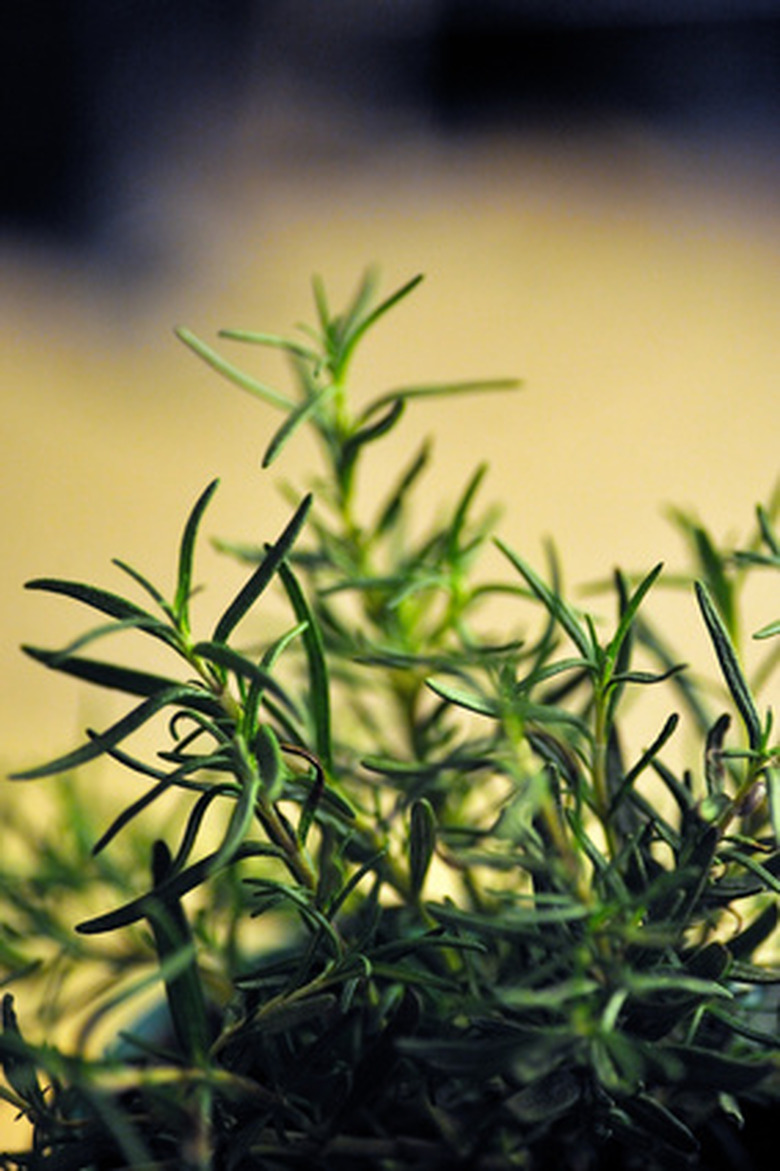How To Grow Herbs For Zone 8
Gardeners in the southern United States who want to grow herbs might think that the warm climate will limit their choices. Although not all herbs enjoy the heat, quite a few do. In fact, some of the most popular choices are considered hardy in USDA Zone 8.
Herb Growing Basics
Step 1
Choose a sunny spot in your garden. Most Zone 8 herbs prefer full sun, but a few will tolerate some shade.
Step 2
Group annual herbs and perennial herbs together. This will make it easier to plant new herbs the following year.
- Gardeners in the southern United States who want to grow herbs might think that the warm climate will limit their choices.
Step 3
Plant herbs away from other plants that may require spraying. Most herbicides and insecticides are not labeled for use on herbs.
Step 4
Amend the soil so it matches the herb's specific water needs. Herbs are sensitive to moisture conditions. Many herbs prefer a soil that is well-draining. However some herbs, such as parsley, chervil and mint, prefer a moist soil.
Step 5
Harvest plants depending on your need. Plants can be harvested at almost any time if used immediately. If planning on storing the herb, wait until the plant begins to flower. Wash dirty leaves in cold water before drying or freezing.
- Plant herbs away from other plants that may require spraying.
Step 6
Dry herbs with a high moisture content, such as basil and mint, rapidly in a well-ventilated, dark area. Herbs with a low moisture content, such as sage, rosemary or thyme, can dried partially in the sun, but excessive sun exposure should be avoided.
Good Herbs for Zone 8
Step 1
Lavender (Lavandula officinalis) has long been popular for its scent. It is a perennial that can grow up to 24 inches high. Plant it in a light, well-draining soil with a pH of 7.1 in full sun. For a bit of silver color, consider planting Woolly Lavender (Lavandula lanata), which has silver colored leaves and blooms in the late summer.
Step 2
Rosemary (Rosmarinus officinalis) remains a beautiful evergreen that can be kept outside year round in Zone 8. It prefers a well-draining soil with a pH between 6.5 to 7.0 in full sun. Water regularly and it can grow to heights of three feet or more. Two cultivars good for Zone 8 include Spice Island and Tuscan Blue.
- Dry herbs with a high moisture content, such as basil and mint, rapidly in a well-ventilated, dark area.
- For a bit of silver color, consider planting Woolly Lavender (Lavandula lanata), which has silver colored leaves and blooms in the late summer.
Step 3
Sage (Salvia officinalis) is a two-foot-tall perennial herb. It has grayish-green foliage and will produce purple or pink flowers during its second year. It prefers a well-draining, rich soil in full sun. For a more unique smell, try Pineapple Sage (Salvia elegans) or Grape Scented Sage. These plants will grow much taller (three feet and eight feet tall respectively) but have a fruity fragrance. Other sages that can be grown in Zone 8 include black sage, bog sage, Mexican blue sage, Cleveland sage and white sage.
Step 4
Basil (Ocimum basilicum) is a favorite of many chefs and gardeners for its spicy aroma. It should be grown in a rich, moist, well-draining soil with a pH of 6.0 in full sun. It can be planted in the early spring or the fall. Depending on the variety, plants will grow between six inches to three feet tall.
- Sage (Salvia officinalis) is a two-foot-tall perennial herb.
- These plants will grow much taller (three feet and eight feet tall respectively) but have a fruity fragrance.
Step 5
Almost all mints (Mentha spp.) can be grown in Zone 8, including the ever-poular spearmint (Mentha spicata) and peppermint (Mentha piperita). For a fruity twist, you might consider apple mint (Mentha rotundifolia) or banana mint (Metha "Banana"). They will tolerate full sun to partial shade. Plant in rich, moist soil with a pH of about 6.5. Plants will grow between 18 to 24 inches high.
Step 6
Catnip (Nepeta cataria) is a great herb for any cat lover, since its value as a cooking herb seems to have disappeared. This grayish-green plant is covered with fine white hairs and produces spikes of white and purple flowers. It will grow up to three feet tall. Plant in full sun in a well-draining soil.
- Almost all mints (Mentha spp.)
- For a fruity twist, you might consider apple mint (Mentha rotundifolia) or banana mint (Metha "Banana").
Step 7
A few other herbs that can be grown in USDA Zone 8 include Anise (Pimpinella anisum), Bee Balm (Monarda didyma), Borage (Borago officinalis), (Elettaria cardamomum), Chervil (Anthriscus cerefolium), Chives (Allium schoenoprasum), Comfrey (Symphytum officinale), Coriander (Coriandrum sativum), Cumin (Cuminum cyminum), Dill (Anethum graveolens), Eucalyptus (Myrtaceae), European Oregano (Origanum vulgare), Fennel (Foeniculum vulgare), Foxglove (Digitalis purpurea), Garlic (Liliaceae), Ginger (Zingiber officinale), Ginseng (Panax quinquefolium), Horehound (Marrubium vulgare), Lemon balm (Melissa officinalis), Lovage (Levisticum officinale), Marjoram (Origanum majorana), Mexican Oregano (Lippia graveolens), Parsley (Petroselinum crispum), Summer Savory (Satureja hortensis), Tarragon (Artemisia dracunculus), Thyme (Thymus spp.), Winter Savory (Satureja montana) and Wormwood (Artemisia absinthium).
